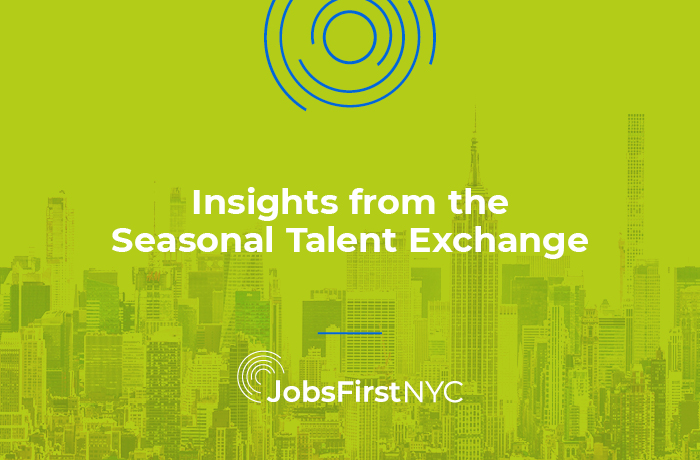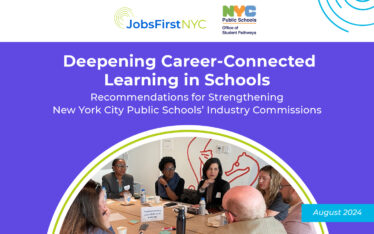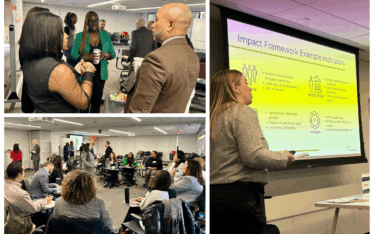While the number of young adults who are out of school and out of work has been declining, more than 60 percent of young adults are part-time workers, a trend that has steadily increased since the Great Recession. The anticipated economic downturn from the COVID-19 pandemic will almost certainly accelerate the growth in part-time jobs. And it’s not just young adults–as the employment landscape changes, more work is becoming part-time, gig, or contract work. Meanwhile, seasonal businesses face a tough hiring challenge, often forced to recruit hundreds of employees for positions with lower barriers to entry in a matter of weeks.
In late 2017, JobsFirstNYC supported the launch of the Seasonal Talent Exchange (STE), an employer-led pilot that refers employees to seasonal employers across spring, winter and summer seasons. Throughout the pilot, employees attended training aimed at providing them with skills integral to the work they were doing, so that they would be better poised to move along a career pathway to year-round work and advancement. This model sought to find a way to provide seasonal workers with opportunities for year-round employment and upskilling, as well as to provide companies with pipelines of pre-screened talent.
The STE pilot concluded in the summer of 2019. It was successful in helping many people find steady work, with 42% of the 186 participants moving from one employer to another and another five percent moving to full-time jobs with benefits. This pilot was also successful in providing us with a range of insights to understand the behavior and interests of both employers and workers.
The STE revealed the barriers to steady employment faced by seasonal employees who wish to work year round. A key challenge was the large gap between the high-demand summer and winter seasons and the lower-demand spring season that typically has less employment opportunities. Although there was an element of training embedded in the model, the STE found it challenging to connect people to appropriate upskilling opportunities, as it did not have the necessary infrastructure for better skills matching across participating employers. We also heard from STE employers the need for greater volume of non-competitive employers that can grow the potential talent pool. This would allow for workers to also have greater opportunities for fuller employment.
Despite these challenges, bringing together a group of seasonal businesses led to important positive discoveries. Employers were very invested in their seasonal employees’ well-being, providing some of the aforementioned training opportunities and working together to ensure as seamless a hiring process as possible. There was also a great deal of exploration and interest in developing a shared benefits portal that can help connect workers to health care, retirement accounts, and other typical benefits that come with full-time employment opportunities. By far, though, the element that employers in the STE found most valuable was forging alliances with one another and sharing best practices in recruiting procedures and the use of technology to track and process applications.
It’s clear that we need to bring employers together to share their experiences and to collaborate on innovative solutions that respond to market changes. This is especially critical given the coming economic downturn brought on by the COVID-19 pandemic. Employers are willing to coordinate efforts and learn from one another in the same way that public sector stakeholders have through past JobsFirstNYC partnerships. Building on that momentum is key to stronger employer involvement in the workforce development system overall. Additionally, this learning community of higher-road employers who have a strong interest in supporting talent growth of their seasonal staff is uniquely poised to address the question of how lower-wage, semi-skilled gig, contract, and seasonal work can be built into a career pathway.
The next stage of this work naturally extends from these findings. We will continue to work with employers in the Seasonal Talent Exchange and to further develop the idea of establishing an employer exchange that can respond to the continued trend of a part-time job market to help workers access greater economic security and support employers in finding and keeping top talent.




